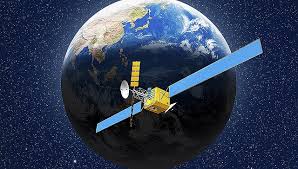


[File photo]
Following the successful operation of China’s first high-throughput communication satellite the Shijian-13 in January, there are now over 170 Chinese satellites working in outer space, a number that marks the country’s progress towards becoming a “space superpower.”
Serving as China’s space debut in 2018, the high-orbit satellite has finished a two-way high-speed laser communication test between the satellite and the ground station, the first of its kind in the world. The satellite is also able to provide 26 user beams covering China’s remote areas, which provides services for long-distance learning, medicine, and emergency communications.
“We’ve been conducting research on the new generation of the Shijian satellite. We want to build a high-throughput satellite with a capacity of 500G, helping China to achieve its national strategy to build a broadband country,” Li Feng, chief designer of Shijian-13, told People’s Daily.
China has been making great efforts to become a space superpower. During the 19th National Congress of the Communist Party of China, space experts noted that the country will become a world space power by 2045 in an all-round way, catching up with the US in some key aerospace projects, a claim that echoes the strategic goal on aerospace capabilities put forward by Chinese President Xi Jinping.
The country has also made great achievements in space technologies in recent years. In 2016, the world’s first quantum satellite, nicknamed “Micius” after an ancient Chinese scientist, lifted off from a Long March 2-D rocket to establish “hack-proof” quantum communications by transmitting uncrackable keys from space to the ground.
 Fire brigade in Shanghai holds group wedding
Fire brigade in Shanghai holds group wedding Tourists enjoy ice sculptures in Datan Town, north China
Tourists enjoy ice sculptures in Datan Town, north China Sunset scenery of Dayan Pagoda in Xi'an
Sunset scenery of Dayan Pagoda in Xi'an Tourists have fun at scenic spot in Nanlong Town, NW China
Tourists have fun at scenic spot in Nanlong Town, NW China Harbin attracts tourists by making best use of ice in winter
Harbin attracts tourists by making best use of ice in winter In pics: FIS Alpine Ski Women's World Cup Slalom
In pics: FIS Alpine Ski Women's World Cup Slalom Black-necked cranes rest at reservoir in Lhunzhub County, Lhasa
Black-necked cranes rest at reservoir in Lhunzhub County, Lhasa China's FAST telescope will be available to foreign scientists in April
China's FAST telescope will be available to foreign scientists in April "She power" plays indispensable role in poverty alleviation
"She power" plays indispensable role in poverty alleviation Top 10 world news events of People's Daily in 2020
Top 10 world news events of People's Daily in 2020 Top 10 China news events of People's Daily in 2020
Top 10 China news events of People's Daily in 2020 Top 10 media buzzwords of 2020
Top 10 media buzzwords of 2020 Year-ender:10 major tourism stories of 2020
Year-ender:10 major tourism stories of 2020 No interference in Venezuelan issues
No interference in Venezuelan issues
 Biz prepares for trade spat
Biz prepares for trade spat
 Broadcasting Continent
Broadcasting Continent Australia wins Chinese CEOs as US loses
Australia wins Chinese CEOs as US loses